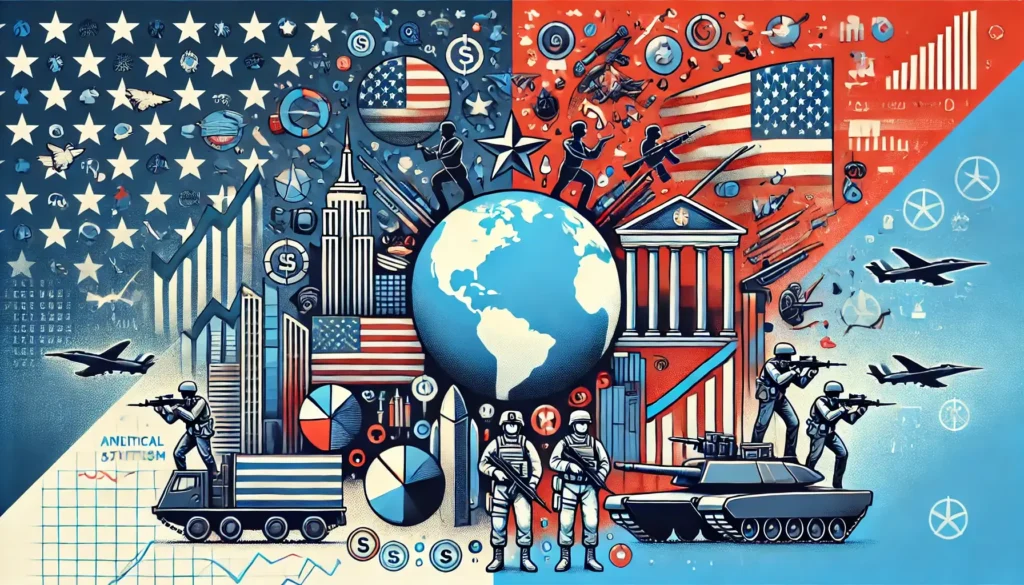Neoconservatism vs Trumpism Explained – The Right’s Civil War
The American right isn’t one camp — it’s a battlefield. On one side stand the neoconservatives: policy wonks in suits who believe in global intervention and free markets. On the other, Trumpists: populists in red hats who want borders, tariffs, and America First. Same party, different worlds.
Table of contents
What Is Neoconservatism?
- Origins: Born mid-20th century from disillusioned liberals, hardened by the Cold War.
- Core belief: America must lead the world and spread democracy, often through military force.
- Policies: intervention abroad (Iraq War as the textbook example), free markets at home, traditional values in society.
- Style: elite-driven, intellectual, rooted in Washington think tanks.
What Is Trumpism?
- Origins: Emerged with Donald Trump’s rise in 2016. Less an ideology, more a style of politics.
- Core belief: Put America first. Protect borders, jobs, and culture.
- Policies: tariffs, deregulation, anti-globalism, strict immigration control, scepticism of NATO and foreign wars.
- Style: populist, emotional, media-driven — direct appeal to the masses.
Key Differences in Practice
- Foreign Policy:
- Neocons: Interventionist, America as world police.
- Trumpists: Isolationist streak, focus on national interest.
- Globalisation:
- Neocons: Embrace trade and international institutions.
- Trumpists: Attack trade deals, distrust global bodies.
- Immigration:
- Neocons: Pragmatic reform.
- Trumpists: Border wall, deportations, hardline stance.
- Style:
- Neocons: White papers and think tanks.
- Trumpists: Rallies and tweets.
Who Benefits? Who Doesn’t?
Winners:
- Neocons: defence contractors, foreign policy elites, global allies who depend on U.S. power.
- Trumpists: working-class voters, small-town America, those hurt by outsourcing and mass migration.
Losers:
- Neocons lose grassroots voters.
- Trumpists lose elite support and media respectability.
The Consequences
This isn’t just a policy debate. It’s a struggle for the soul of the American right:
- Neoconservatism peaked with Bush and Iraq.
- Trumpism reshaped the GOP base.
The war isn’t settled — but one thing is clear: the Republican Party can’t be both.
Conclusion
Neoconservatism dreamed of exporting democracy. Trumpism dreams of defending America. The clash between them isn’t just history — it’s the open wound of U.S. politics.
👉 Want the bigger picture on how power really works? Visit our Politics of Power Explainer Hub to see how leaders, corporations, and ideologies battle for control.
FAQ
What’s the main difference between neoconservatism and Trumpism?
Neocons are globalist and interventionist; Trumpism is nationalist and protectionist.
Are they both conservative?
Yes, but they emphasise different priorities — global leadership vs national sovereignty.
Why does this clash matter?
Because it defines the future of the Republican Party and U.S. foreign policy.



